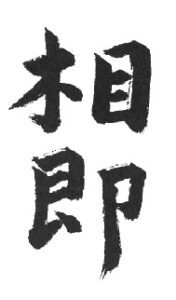by Pam Marraccini | awareness, Buddha, compassion, daily life, deep looking, Four Elements, happiness, heart, love, meditation, mindfulness, present, Smile, Thich Nhat Hanh, understanding
Present Moment Wonderful Moment
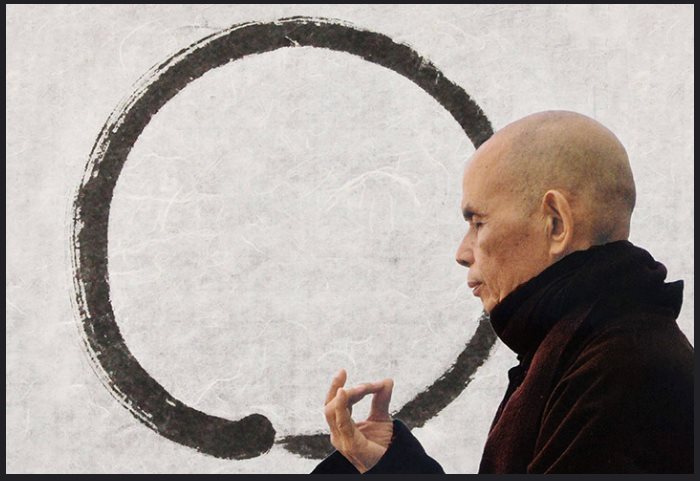
by Thich Nhat Hanh
#7 Looking in the Mirror
Awareness is the mirror
Reflecting the four elements.
Beauty is a heart that generates love
And a mind that is open.
The moments during the day of looking in the mirror can be moments of deep awareness. The mirror can serve as a tool for cultivating mindfulness so that we develop a broad capacity to understand and love others. Anyone who maintains awareness in the present moment becomes beautiful and naturally emanates peace, joy, and happiness. A calm half smile and a loving heart are refreshing, and they allow miracles to unfold. The Buddha’s smile is beautiful because it expresses tolerance, compassion, and loving kindness.
In Vietnamese culture, the four great elements are earth, water, fire, and air. The Vietnamese poet wrote;
The flower with its ephemeral fragrance,
Is made of the four elements.
Your eyes, shining with love,
Are also made of the four elements.
The four elements are neither mind nor matter. They are the universe itself revealed to us. When your mind is the clear mirror of meditative awareness, you will know that you are the outward expression of the essence of reality. So please smile. Smile with your eyes, not just your lips. Smile with your whole being, reflecting the four elements of the mirror of mindful awareness.
by Pam Marraccini | afflictions, awareness, breathing, Buddha, compassion, consciouness, deep listening, enlightenment, freedom, garden, heart, jewel, meditation, mindfulness, Peace, seeds, Thich Nhat Hanh
An excerpt: Beginning Anew, Ceremony for the Deceased,
Chanting From the Heart, Buddhist Ceremonies and Daily Practices
by Thich Nhat Hanh and the Monks and Nuns of Plum Village

…With all our heart we go for refuge.
Turning to the Buddhas in the 10 directions
and all the Bodhisattvas, noble disciples, and self-achieved Buddhas
very sincerely we recognize our errors
and the mistakes of our wrong judgements.
Please bring the balm of clear water
to pour on the roots of our afflictions.
Please bring the raft of the true teachings
to carry us over the ocean of sorrows.
We vow to live an awakened life,
to practice smiling and conscious breathing
and to study the teachings, authentically transmitted.
Diligently, we shall live in mindfulness.
We come back to live in the wonderful present,
to plant our heart’s garden with good seeds,
and to make strong foundations of understanding and love.
We vow to train ourselves in mindfulness and concentration,
practicing to look and understand deeply
to be able to see the nature of all that is,
and so to be free of the bonds of birth and death.
We learn to speak lovingly, to be affectionate,
to care for others whether it is early morn or late afternoon,
to bring the roots of joy to many places,
helping people to abandon sorrow,
to respond with deep gratitude
to the kindness of parents, teachers, and friends.
With deep faith, we light up the incense of our heart.
We ask the Lord of Compassion to be our protector
On the wonderful path of practice.
We vow to practice diligently,
cultivating the fruits of this path.
by Pam Marraccini | anger, awareness, breathing, Buddha, Buddhist psychology, compassion, concentration, consciouness, deep looking, heart, ignorance, joy, love, meditation, mindfulness, nonduality, seeds, suffering, Thich Nhat Hanh, understanding
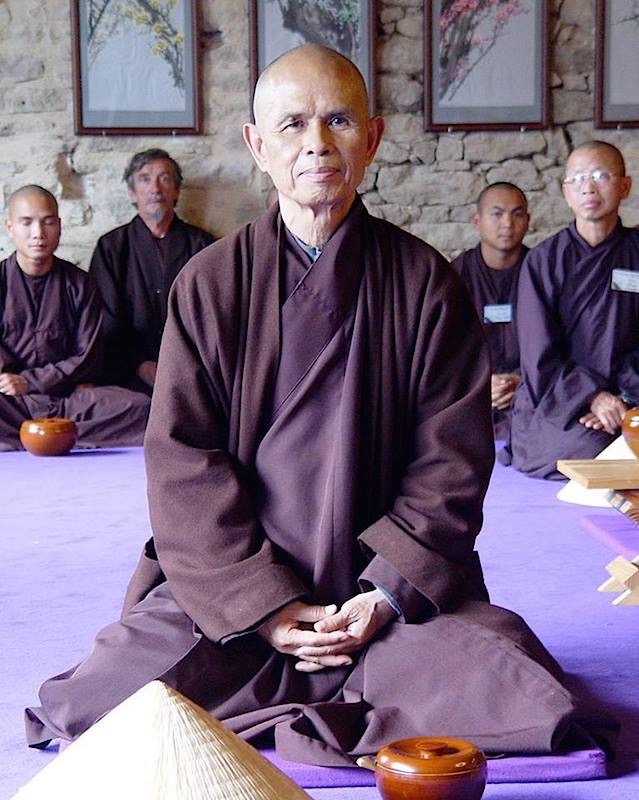
Understanding is the fruit of meditation. When we practice deep looking directed toward the heart of reality, we receive understanding, we receive the wisdom that makes us free. If there is deep pain within you, meditate.
Meditating is not trying to run away, trying to ignore the presence of the pain, but on the contrary, it is looking at it face-to-face. You have to practice deep looking directed toward the nature of this pain because for Buddhists, we are joy, but we are also pain; e are understanding, but we are also ignorance. Meditating is not transforming oneself into a battlefield where one side is fighting another, where good fights against evil. This is not Buddhist meditation. Buddhist meditation is based on the principle of non-duality. This means that if we are mindfulness, if we are love, we are also ignorance, we are also suffering, and there is no reason to suppress anything at all.
When the seed of anger manifests on the level of our conscious mind, our immediate awareness, it is because the seed of anger is in the depths of our consciousness, and then we begin to suffer. Our immediate awareness is something like our living room. The task of the meditator is not to chase away or to suppress the energy of anger that is there but rather to invite another energy that will be able to care for the anger.
You can use the method of mindful breathing to make the seed of this other energy grow inside of you. It will then manifest in the form of energy, and this energy will embrace your energy of anger like a mother taking a baby in her arms. Then there is only tenderness, there is no fighting with, or discriminating against, the pain. The purpose of the practice of mindful breathing is to help to give birth to this precious energy called mindfulness and to keep it alive.
… Mindfulness is like a light, enabling concentration to really be there, and that also makes it possible for us to look deeply into the heart of things. From this looking deeply is born deep vision, understanding. Mindfulness brings concentration, understanding, love and freedom.
…when the energy of compassion and love touches us, healing establishes itself.
In Buddhism, we say that mindfulness is the energy of the Buddha. The seed of mindfulness is the baby Buddha that is in us. This precious seed can be buried very deeply under several layers of suffering and ignorance. We begin by looking for, by touching this seed of mindfulness, and everybody knows that all of us have this precious seed in us.
When you drink water, if you are aware of the fact that you are drinking water, mindfulness is there. Mindfulness is the energy that makes it possible for us to be aware of what is happening in the present moment.
When you breathe in and you are aware that you are breathing in, mindfulness is there. Mindfulness is always mindfulness of something. When you are angry and yu know that you are angry, mindfulness is there. Anger is one energy, mindfulness is another, and this second kind of energy arises in order to care for the first like a mother caring for her baby.
by Pam Marraccini | awareness, compassion, equanimity, happiness, joy, love, meditation, mindfulness, present, suffering, Uncategorized, understanding
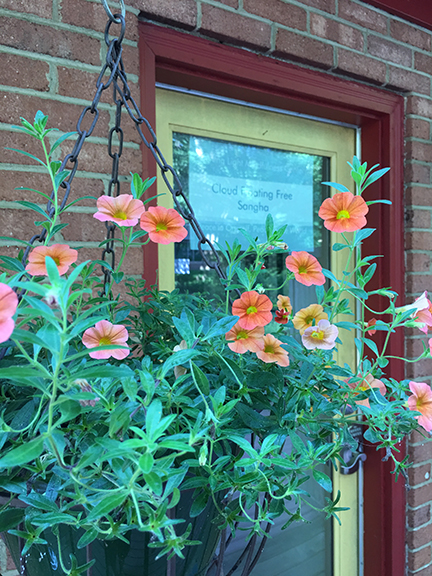
Digging Deep p66
Practicing loving kindness meditation is like digging deep into the ground until we reach the purest water. We look deeply into ourselves until insight arises and our love flows to the surface. Joy and happiness radiate from our eyes and everyone around us benefits from our smile and our presence. If we take good care of ourselves, we help everyone. We stop being a source of suffering in the world, and we become a reservoir of joy and freshness. Here and there are people who know how to take good care of themselves, who live joyfully and happily. They are our strongest support. Whatever they do, they do it for everyone.
Immeasurable Minds p81
Loving kindness, compassion, joy, and equanimity are described as unlimited states of mind because they continue to grow and they cannot be measured. The more you practice, the more you see your love growing and growing until there is no limit. The more you practice compassion, the more it grows. The more you cultivate joy the more joy you will feel and be able to share. The more you understand, the more you love: the more you love, the more you understand. They are two sides of one reality. The mind of love and the mind of understanding are the same.
Fulfillment p86
We should practice in such a way that every moment is fulfilling. We should feel satisfaction in every breath, in every step, in every action. This is true fulfillment. When you breathe in and out, there is fulfillment. When you take a step, there is fulfillment. When you perform any action, there is the fulfillment that comes from living deeply in the present moment.
Natural Happiness p87
If you walk with true awareness of every step, without having a goal to get anywhere, happiness will arise naturally. You don’t need to look for happiness. When we’re in touch with the wonders of life, we become aware of the many conditions of happiness that are already there, and naturally, we feel happy. The beauty around us brings us back to the present moment so we can let go of the planning and worries that preoccupy us. When you look at the person you love, if he is absorbed in anxiety, you can help him get out. “Darling, do you see the sun? Do you see the signs that spring is coming?” This is mindfulness; we become aware of what is happening now and we are in touch with the conditions of happiness that are there, inside us and all around us.
by Pam Marraccini | afflictions, anger, awareness, breathing, compassion, consciouness, deep listening, equanimity, garden, happiness, heart, joy, listening, love, meditation, mindfulness, Peace, present, true home, understanding
Heart Like a R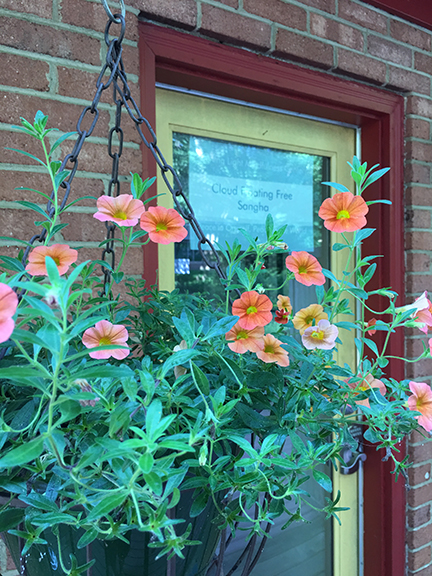 iver, Page 8
iver, Page 8
If you pour a handful of salt into a cup of water, the water becomes undrinkable. But if you pour the salt into a river, people can continue to draw the water to cook, wash, and drink. The river is immense, and it has the capacity to receive, embrace, and transform. When our hearts are small, our understanding and compassion are limited, and we suffer. We can’t accept or tolerate others and their shortcomings, and we demand that they change. But when our hearts expand, these same things don’t make us suffer anymore. We have a lot of understanding and compassion and can embrace others. We accept others as they are, and then they have a chance to transform. So the big question is: how do we help our hearts to grow?
Feeding our Love, Page 9
Each of us can learn the art of nourishing happiness and love. Everything needs food to live, even love. If we don’t know how to nourish our love, it withers. When we feed and support our own happiness, we are nourishing our ability to love. That’s why to love means to learn the art of nourishing our happiness.
Love is Organic, Page 14
Love is a living, breathing thing. There is no need to force it to grow in a particular direction. If we start by being easy and gentle with ourselves, we will find it is just there inside of us, solid and healing.
Be Beautiful, Be Yourself, Page 23
If you can accept your body, then you have a chance to see your body as your home. You can rest in your body, settle in, relax, and feel joy and ease. If you don’t accept your body and your mind, you can’t be at home with yourself. You n=have to accept yourself as you are. This is a very important practice. As you practice building a home in yourself, you become more and more beautiful.
The Practice of Metta, Page 64
To love is, first of all, to accept ourselves as we actually are. The first practice of love is to know oneself. The Pali word Metta means “loving kindness.” When we practice Metta Meditation, we see the conditions that have caused us to be the way we are; this makes it easy to accept ourselves, including our suffering and happiness. When we practice Metta Meditation, we touch our deepest aspirations. But the willingness ad aspiration to love is not yet love. We have to look deeply, with all our being, in order to understand the object of our meditation. The practice of love meditation is not autosuggestion. We have to look deeply at our body, feelings, perceptions, mental formations, and consciousness. We can observe how much peace, happiness, and lightness we already have. We can notice whether we are anxious about accidents or misfortunes, and how much anger, irritation, fear, anxiety or worry are still in us. As we become aware of the feelings in us, our self-understanding will deepen. We will see how our fears and lack of peace contribute to our unhappiness, and we will see the value of loving ourselves and cultivating a heart of compassion. Love will enter our thoughts, words, and actions.
by Pam Marraccini | awareness, breathing, compassion, deep listening, heart, interbeing, listening, love, meditation, present, seed, store consciousness, suffering, understanding
 Ask with your whole body and mind… Ask the person who causes you the most suffering these questions: “Who are you who brings me such pain, who makes me feel so much anger and hatred?” To understand you have to become one with your beloved, and also with your so-called enemy. You have to worry about what they worry about, suffer their suffering, appreciate what they appreciate. You and your object of love cannot be two. They are as much you as you are yourself.
Ask with your whole body and mind… Ask the person who causes you the most suffering these questions: “Who are you who brings me such pain, who makes me feel so much anger and hatred?” To understand you have to become one with your beloved, and also with your so-called enemy. You have to worry about what they worry about, suffer their suffering, appreciate what they appreciate. You and your object of love cannot be two. They are as much you as you are yourself.
Continue until you see yourself in the cruelest person on Earth, in the child starving, in the political prisoner. Practice until you recognize yourself in everyone in the supermarket, on the street corner, in a concentration camp, on a leaf, in a dewdrop. Meditate until you see yourself in a speck of dust in a distant galaxy. See and listen with the whole of your being. If you are fully present, the rain of the Dharma will water the deepest seeds in your store consciousness, and tomorrow, while you are washing the dishes or looking at the blue sky, that seed will spring forth, and love and understanding will appear as a beautiful flower.





